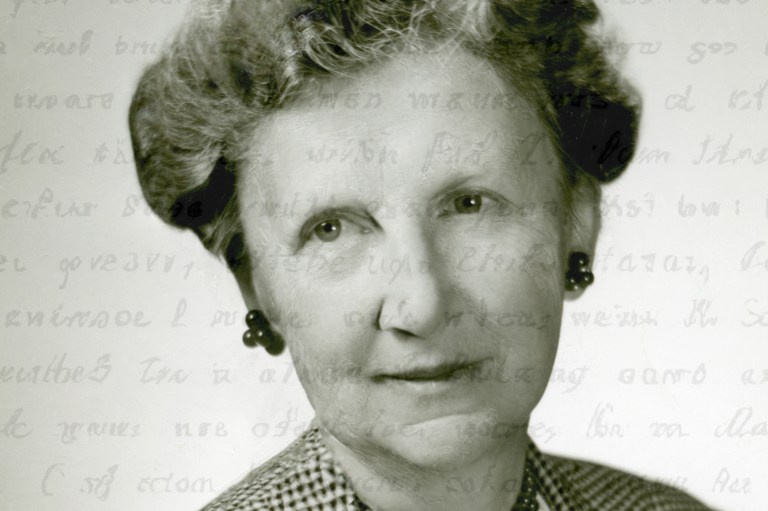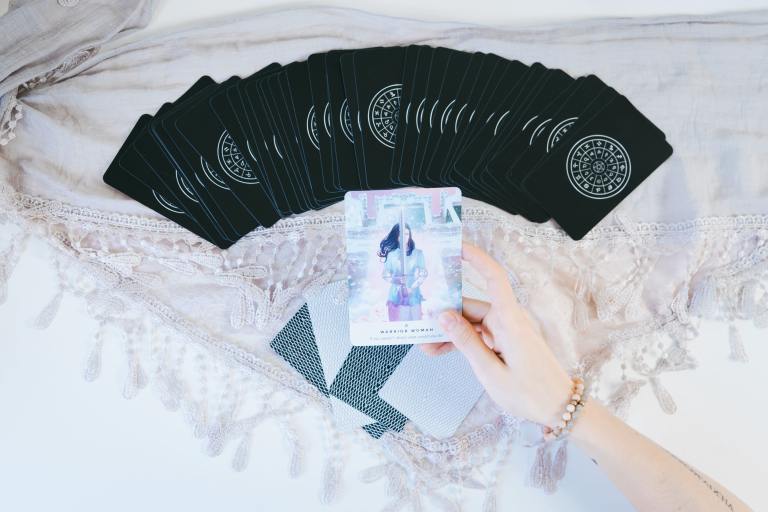6 Brilliant Modern Retellings Of Classic Stories Written By Female Authors
Nothing is original anymore; such is the plight of the modern artist. Mark Twain once wrote, “Substantially all ideas are second-hand, consciously and unconsciously drawn from a million outside sources” — and that was well over a century ago, so one can only imagine how many times these ideas have been passed down in the interim.
Nothing is original anymore; such is the plight of the modern artist. Mark Twain once wrote, “Substantially all ideas are second-hand, consciously and unconsciously drawn from a million outside sources” — and that was well over a century ago, so one can only imagine how many times these ideas have been passed down in the interim.
But that isn’t necessarily a bad thing. As ideas are taken and repurposed, they evolve into something new, with unusual twists and takes that makes them just as exciting and intriguing as the original ideas. This is what you’ll commonly see these days, as spinning strong source material is a pretty popular M.O. for authors.
Of course, just because the original material is stellar, doesn’t mean the new version of it will be. But when literary retellings are done well, they’re done extremely well… and the best among them deserve recognition. I’ve also noticed that some of the most interesting modern takes on classic literature come from female authors, many of whom aren’t nearly as well-known as they should be.
Which is why this list will focus on six of the best modern retellings by female authors, from comedies of manners to ancient Greek myths. Get ready to reminisce on your high school English classes, because here they are.
1. Eligible by Curtis Sittenfeld (retelling of Pride and Prejudice)
If you love Bridget Jones and The Lizzie Bennet Diaries, this incisive contemporary update of Jane Austen’s best-known novel should be your next read. In Eligible, the “truth universally acknowledged” (that rich men are in want of a wife) is turned into a reality dating show à la The Bachelor. Of course, the main contestant this season is none other than Chip Bingley, a handsome, wealthy doctor who’s just moved to Cincinnati. Which, coincidentally, is where magazine writer Liz Bennet and her yoga instructor sister Jane live.
After a chance meeting at a Fourth of July barbecue, the sisters agree Chip is practically perfect in every way — except for his unfortunate acquaintance with snooty neurosurgeon Fitzwilliam Darcy. But when Chip skips town due to contractual agreements with the show, it’s Darcy who’s left behind to clumsily explain his absence… and to clash with Liz, who despises him.
All that Regency tension translates into hot hate sex in this very twenty-first-century novel. And if that’s not enough to pique your interest, consider the following details: ditzy Kitty and Lydia have become CrossFit-obsessed millennials, and Mary is an Internet recluse earning her third online master’s degree. In other words, Sittenfeld’s adaptations are hilarious, and the social satire of this retelling absolutely holds up to the original.
2. The Cake House by Latifah Salom (retelling of Hamlet)
Rosaura Douglas’s father has recently committed suicide, her mother has remarried a wealthy businessman, and her new family has relocated to a picture-perfect home in suburban Los Angeles. But Rosie loathes the “Cake House” and harbors vague suspicions about her father’s sudden, violent death and mother’s hasty remarriage. Her only coping method is dissociating: riding her bike around the block naked, sexually propositioning her stepbrother’s friends, and other activities that might indicate a rather antic disposition.
But when her father’s ghost appears to her in the Cake House, Rosie must re-engage with real life to investigate his claims — namely, that her stepfather Claude is an untrustworthy snake. Yet with her grasp on reality already so tenuous, can Rosie even handle the truth? A twisted and compulsive read, this Hamlet retelling perfectly blends all the best elements of other dark teen-led thrillers like Thoroughbreds and Cruel Intentions, culminating in a shocking Shakespearean finale.
3. Re Jane by Patricia Park (retelling of Jane Eyre)
And if you adore Jane Eyre, but wish it were a little more diverse and relatable (admittedly a tall order for any book in the mid-nineteenth century), you’ll find your literary match in Re Jane by Patricia Park. The Jane of this story is a Korean-American resident of Flushing, New York, who takes an au pair job with the upper-class, academic Mazer-Farleys. Thinking that their privilege and prestige is her ticket to a better life, Jane eagerly begins an affair with Ed Farley — despite his wife (a tongue-in-cheek character with an office in the attic) being very much in the picture. But when a family emergency calls Jane to Seoul, can her relationship with Farley survive… and indeed, should it?
Though the Brönte-inspired elements are undeniably entertaining, this book truly shines in its nuanced depiction of the Asian-American experience and the inevitable difficulties of living between two cultures. Jane feels neither fully Korean nor fully American, and helping the Mazer-Farleys raise their child underscores how different her own upbringing was. But it’s not all downhill: reconnecting with her biological family in Seoul opens Jane’s eyes, and she’s able to appreciate her identity with newfound perspective by the end of the book, so that she can make the decision that’s right for her.
4. The Winters by Lisa Gabriele (retelling of Rebecca)
In this astute update of Daphne du Maurier’s Rebecca, the titular family lives up to their name: from the cold-blooded political ambition of Max Winter, our narrator’s fiancé, to the icy dynamic with his daughter Dani, everything about them is wintry indeed. But that doesn’t stop our heroine (who remains unnamed, in homage to the original) from wanting to marry Max — despite the growing unease she feels on his isolated estate in the Hamptons. Oh, and did I mention that his first wife is dead? And that her presence and memory still clearly haunt the Winter household — a fact that Max seems determined to ignore?
Utterly creepy and absorbing, the strength of The Winters once again lies in the creative changes the author makes to the source material. The southern English setting becomes Long Island; the foreboding housekeeper Mrs. Danvers becomes the brooding teenage Dani; and, of course, the ending has a unique twist that you’ll never see coming, even if you’ve read the original. So no matter how much you love Rebecca and think no one could ever top such a Gothic achievement, trust me that The Winters will still give you serious chills.
5. Social Creature by Tara Isabella Burton (retelling of The Talented Mr. Ripley)
Two best friends: one wealthy and connected, the other scraping to get by. One living life to the fullest, the other coveting that same lifestyle. One willing to do anything to remain adjacent to this newly discovered luxury… and the other soon to fall victim to their machinations.
Sound familiar? It’s the plot of Patricia Highsmith’s classic suspense novel The Talented Mr. Ripley, but it’s also the plot of Tara Isabella Burton’s Social Creature: a twenty-first-century, New York-based retelling in which Ripley becomes the seemingly unassuming Louise. When she meets rich society girl Lavinia, she’s quickly sucked into the glitz and glitter of Lavinia’s life, and sacrifices her old life to become Lavinia’s go-to girl.
But after Lavinia reveals her intention to replace Louise, the latter realizes she’s come too far to give up now… and must take drastic steps to secure her place in the upper echelons of young, glamorous New Yorkers. Fueled by the drama and duplicity of social media, Social Creature is a debauched and delicious retelling that would no doubt make Highsmith proud.
6. Home Fire by Kamila Shamsie (retelling of Antigone)
We’re getting into pretty cerebral territory with Home Fire, a modern retelling of Sophocles’ Antigone. For those who haven’t read it, Antigone is a tragedy that begins with two brothers dying in a civil war, having fought on opposite sides. As a result, only one of them receives burial rites, while the other is left to decompose on the battlefield.
Antigone, their headstrong sister, insists that both be buried properly — against the will of her sister Ismene and the new ruler, Creon, who commands that Antigone be buried alive. Little does Creon know that his actions have set a dark chain of events in motion, ending in the deaths of his own wife and son.
So how does this translate in the modern day? Well, Antigone is now Aneeka, a young Muslim woman studying law in London, and her brother Parvaiz has disappeared to try and understand their father’s history with the jihadist movement. When Aneeka and her sister Isma realize that he has become indoctrinated, they struggle with how to proceed — especially given Aneeka’s acquaintance with the British Home Secretary in charge of anti-terrorism (the Creon character), who himself comes from Muslim roots.
This timely, beautiful, and ultimately painful (it is based on an ancient Greek tragedy) narrative of a Muslim family in turmoil is a true masterpiece from Shamsie. It seamlessly weaves the everyday complexities and microaggressions of the Muslim experience together with the much heavier issues of jihadism and cultural loyalty. Shamsie depicts each character’s POV with great depth and sympathy, and the pathos of her writing will make your heart ache. So while the story itself may be a tragedy, the existence of this book certainly is not.





